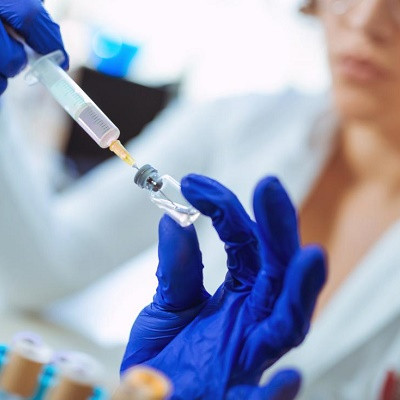
2020-08-06
Visited : 2883
Osivax SAS has assembled a public funding package of more than €32 million (US$36.3 million) to pursue ongoing clinical development of its universal flu vaccine and to take forward a coronavirus vaccine program based on a similar approach, involving vaccine-like particle (VLP) technology.
The company’s coronavirus vaccine program is, obviously, well behind dozens of other efforts scattered across the globe, including several that have received much greater levels of funding and which are at this point well down the clinical development path.
It is, however, taking a distinctive approach, focused on eliciting T-cell as well as B-cell responses against the conserved coronavirus nucleocapsid protein. That could play an important role should a significant degree of antigenic drift occur within the SARS-CoV-2 spike (S) protein, the focus of most vaccine development efforts. It could also become significant should another coronavirus strain with pandemic potential emerge in the future. “The nucleocapsid protein is one of the most abundant proteins in the infected cells,” Osivax CEO Alexandre Le Vert told BioWorld. “We’re cautiously optimistic that we may have some nice results because of what we’ve learned in flu.”
The Lyon, France-based company previously conducted a phase I study of a nanoparticle-formulated influenza vaccine, OVX-836, and it had completed the initial steps in a phase IIa study in 300 volunteers in Belgium before the COVID-19 pandemic hit Europe. “We had finalized the recruitment and immunization by the time Belgium imposed stay-at-home orders” Le Vert said. It was also able to obtain blood samples for immunological analysis from all participants seven days after immunization. It was only able to obtain 28-day samples from 80% of the participants, but it expects to obtain six-month samples from all participants, he said. The study is comparing the safety and immunogenicity of OVX-836 with Influvac Tetra, a quadrivalent seasonal flu vaccine produced by Hatfield, U.K.-based Mylan NV.
The cash, which includes a mix of grant and equity finance, includes a grant of €15.1 million from BPI France, the country’s state-owned investment bank for SMEs, and €17.5 million from the European Innovation Council (EIC), a pilot initiative established by the European Commission to back high-risk, high-impact innovation in Europe. The contribution from the EIC includes €2.5 million in equity funding, which is part of an ongoing series B round at Osivax. Some of the funds will go to Osivax’s clinical collaborators.
The company is also preparing a publication on its phase I data, which it generated with the help of a collaboration with the U.S. National Institute of Allergy and Infectious Diseases (NIAID). The agreement enabled it to gain access to the NIAID’s suite of preclinical immunological assessment assays for characterizing the nature of the T-cell responses to the vaccine.
OVX-836 comprises a large protein containing seven copies of the influenza virus nucleoprotein (NP) fused to a protein-based oligomerization domain – the technology is called Oligodom – which naturally assembles into heptamers. According to preclinical data, that structure is far more immunogenic than monomeric NP.
The company has not yet disclosed the precise details of its coronavirus vaccine candidate, but it will follow the same design principles, to yield a cationic nanoparticle. The flu virus NP has multiple support roles and helps the virus to switch from RNA transcription to replication. The SARS-CoV-2 nucleocapsid protein is required for RNA packaging and release of mature virus particles from infected cells. “The sequence homology is not huge but from a biochemical perspective they do have some similarities,” Le Vert said. The company is targeting 2021 for an initial trial of its coronavirus vaccine candidate.
By then, the fate of many other vaccines currently in development will be known. Some will have fallen by the wayside; some, hopefully, will have demonstrated acceptable levels of safety and efficacy in field studies.
Gaithersburg, Md.-based Novavax Inc., which this week received $1.6 billion in BARDA funding for its NVX-CoV2373 program, remains the standard bearer for VLP-based vaccine approaches in COVID-19. Other companies with VLP-based coronavirus vaccine programs underway include Bavarian Nordic A/S, of Copenhagen, Denmark, which has in-licensed a candidate from Hørsholm, Denmark-based Adaptvac ApS, and Medicago, a subsidiary of Osaka-based Mitsubishi Tanabe Pharma, which this week entered a pact with London-based Glaxosmithkline plc to develop an adjuvanted vaccine based on Medicago’s coronavirus-like particle technology and GSK’s pandemic adjuvant system. The program is due to enter clinical development shortly. Others pursuing VLP-based approaches include Saiba AG, of Pfäffikon, Switzerland; Artes Biotechnology GmbH, of Langenfeld, Germany; Ufovax, Inc., of Wilmington, Del., and Imophoron Ltd., of Bristol, U.K.
Read the original article on BioWorld.